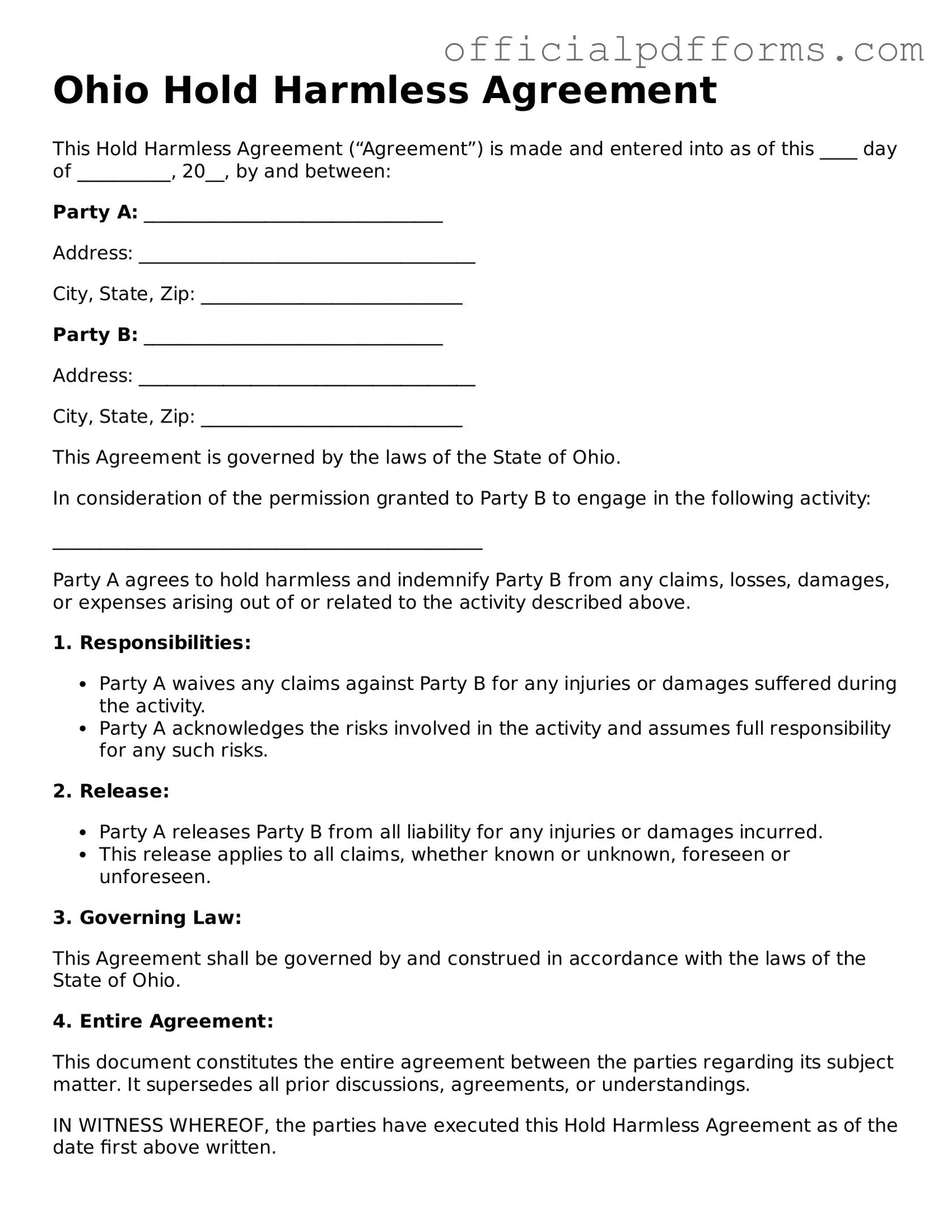What is a Hold Harmless Agreement in Ohio?
A Hold Harmless Agreement is a legal document that protects one party from liability or claims that may arise from the actions or negligence of another party. In Ohio, these agreements are commonly used in various contexts, such as construction contracts, rental agreements, and event planning. By signing this document, one party agrees to indemnify and defend the other party against any potential claims or damages.
Who typically uses a Hold Harmless Agreement?
Hold Harmless Agreements are often utilized by:
-
Contractors and subcontractors in construction projects
-
Property owners and tenants in rental agreements
-
Event organizers and participants in recreational activities
-
Businesses and clients in service contracts
These agreements serve to clarify responsibilities and protect parties from unforeseen liabilities.
What are the key components of a Hold Harmless Agreement?
While the specific content may vary, a typical Hold Harmless Agreement in Ohio includes:
-
The identities of the parties involved
-
A clear description of the activities or services covered by the agreement
-
The scope of liability being waived
-
Any limitations or exclusions
-
Signatures of all parties involved
These components ensure clarity and mutual understanding of the terms agreed upon.
Is a Hold Harmless Agreement legally enforceable in Ohio?
Yes, a Hold Harmless Agreement can be legally enforceable in Ohio, provided it meets certain criteria. The agreement must be clear, specific, and voluntarily signed by all parties. However, it is important to note that Ohio courts may not enforce agreements that attempt to waive liability for gross negligence or willful misconduct.
Can a Hold Harmless Agreement protect against all types of claims?
No, a Hold Harmless Agreement cannot protect against all types of claims. While it can shield parties from certain liabilities, it may not be effective against claims arising from intentional wrongdoing or gross negligence. It is essential to understand the limitations of the agreement and seek legal guidance if necessary.
How should a Hold Harmless Agreement be executed?
To execute a Hold Harmless Agreement, follow these steps:
-
Draft the agreement, ensuring all necessary components are included.
-
Review the document with all parties to ensure understanding and agreement on the terms.
-
Have all parties sign the agreement, preferably in the presence of a witness or notary.
Executing the agreement properly helps to ensure its enforceability in the event of a dispute.
Can a Hold Harmless Agreement be modified after it is signed?
Yes, a Hold Harmless Agreement can be modified after it is signed, but any changes must be documented in writing and signed by all parties involved. Verbal modifications may not be enforceable, so it is crucial to maintain a clear record of any amendments to the agreement.
Where can I find a Hold Harmless Agreement template for Ohio?
Templates for Hold Harmless Agreements can be found through various sources, including legal websites, local bar associations, and online legal services. It is advisable to review any template carefully and consider consulting with a legal professional to ensure it meets your specific needs and complies with Ohio laws.
